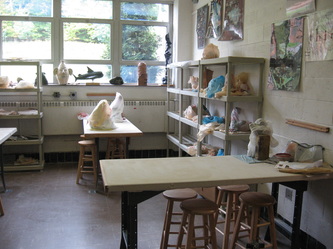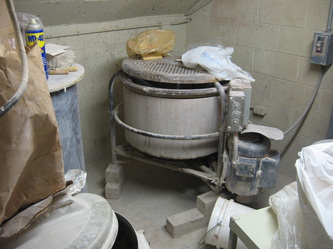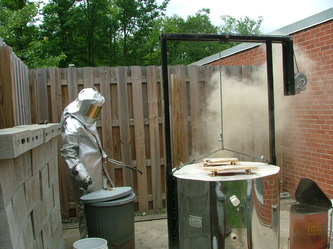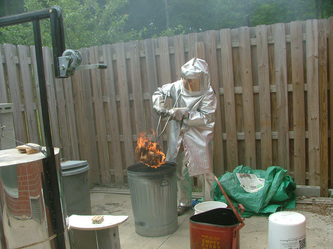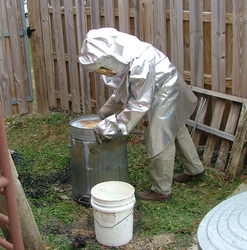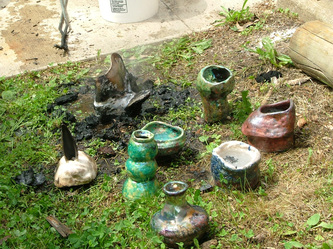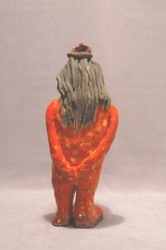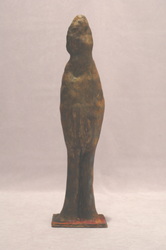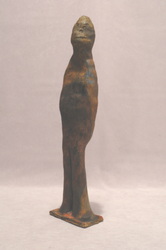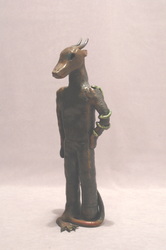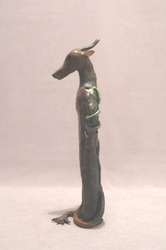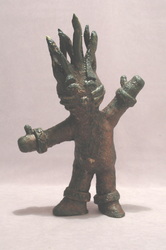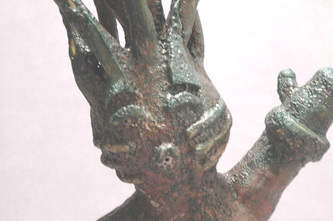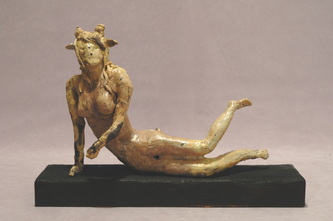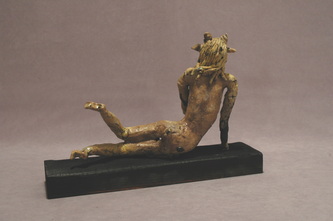THE CERAMIC STUDIO
The main ceramic studio is made up of five canvas covered worktables, a slab roller, three pottery wheels, glazing table, a caged area featuring three electric kilns and a clay making and storage area. Our outside facility contains an Olympic raku gas fired kiln and firing space.
The current focus of the ceramic program is based on the firing process known as raku. The second phase uses traditional earthenware clay and electric kiln firing. Assemblage of ceramic works rely on the traditional approaches of coil and slab construction with wheel use limited to students who already know the process or show a high degree of interest in ceramics. We make our own clay and students mix the majority of their own glazes. Like the sculpture and jewelry/metalsmithing classes ceramics can also be made up of four semester levels of students consisting of basic, intermediate, advanced and independent study.
The current focus of the ceramic program is based on the firing process known as raku. The second phase uses traditional earthenware clay and electric kiln firing. Assemblage of ceramic works rely on the traditional approaches of coil and slab construction with wheel use limited to students who already know the process or show a high degree of interest in ceramics. We make our own clay and students mix the majority of their own glazes. Like the sculpture and jewelry/metalsmithing classes ceramics can also be made up of four semester levels of students consisting of basic, intermediate, advanced and independent study.
Earthenware
RAKU
Raku is an ancient Japanese firing process made American by ceramic artist Paul Soldner in the 1960's. This technique involves taking out the glazed ceramic work at firing temperature and placing it into a reduction chamber containing some organic type of material such as dried grass, leaves, etc. Once pieces are placed into the chamber and the material catches fire the lid is secured and works remain inside between three to ten minutes. During this time glazes chemically interact with the smoke to produce an array of specific raku glazes and special effects. Many times the ceramic work is flashed with metalic finishes such as copper and silver to mention a few. Pieces are then washed and scrubbed to remove any smoke from the surface. Once dried they are sealed to avoid discoloration in the future. Due to the make up of the raku clay body and glazes raku work is strictly decorative and can not be used functionally.

